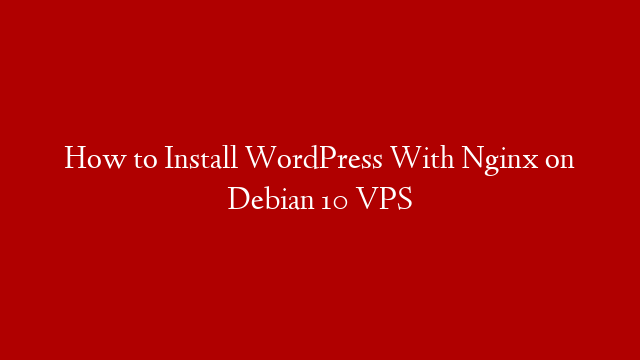WordPress is a popular content management system (CMS) that can be used to create a website or blog from scratch, or to improve an existing website. In this article, we will show you how to install WordPress with Nginx on a Debian 10 VPS.
Nginx is a high performance web server and reverse proxy that can be used to improve the performance and security of your website or blog.
Prerequisites
Before you begin, you will need a Debian 10 VPS with root privileges and a LAMP or LEMP stack installed.
If you don’t have a Debian 10 VPS, you can create one using our Debian 10 VPS hosting service.
Step 1 – Install Nginx
Nginx can be installed with the following command:
sudo apt-get install nginx
Step 2 – Configure Nginx
Once Nginx is installed, you will need to configure it to serve WordPress. The default Nginx configuration file is located at /etc/nginx/nginx.conf . You can open this file with your text editor of choice.
In the file, you will need to add the following lines:
server { listen 80; server_name example.com www.example.com; root /var/www/html; index index.php; }
The first line tells Nginx to listen on port 80. The second line tells Nginx to use the example.com and www.example.com domains. The third line tells Nginx where to find the WordPress files. The fourth line tells Nginx to use the index.php file as the default index file.
If you are using a custom domain, you will also need to add the following line to the file:
location / { try_files $uri $uri/ /index.php?$args; }
This line tells Nginx to look for the domain in the /var/www/html directory. If the domain is not found, Nginx will look for it in the /var/www/html/index.php file.
Once you have made the changes, you can save and close the file.
Step 3 – Create a WordPress Site
Now that Nginx is configured, you can create a WordPress site. The easiest way to do this is to use the WordPress installer.



